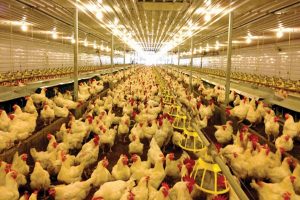THE gross value added (GVA) of crops and livestock is expected to post modest growth this year with the La Niña producing above-normal rainfall, the University of Asia and the Pacific (UA&P) Center for Food and Agribusiness (CFA) said.
In a report, the CFA estimated that crop and livestock GVA will grow by up to 1% in 2025, with poultry posting 5-6% growth. However, fisheries growth is expected to slow to 0.5%.
The CFA said that it expects increased food demand and higher spending this year due to the elections, especially during the campaign period.
“The election also presents an opportunity to push for needed reforms in the agriculture sector. Good governance is crucial to effectively implement agriculture programs,” it said.
“A downside is that La Niña conditions, accompanied by above-normal rainfall, are seen to last until early 2025 and may affect agricultural activities,” it added.
 “Overall, the UA&P-CFA projects a 2024 decline of 1-2% in agriculture as against the 1.2% growth last year (2023),” it added.
“Overall, the UA&P-CFA projects a 2024 decline of 1-2% in agriculture as against the 1.2% growth last year (2023),” it added.
In the first nine months of 2023, crops, livestock, and fisheries declined 4.2%, 3.3%, and 1% respectively. Meanwhile, poultry and agri-activities and services posted 6.6% and 2.9% growth, respectively.
Through the nine months, GVA in agriculture and fisheries declined by 1.5%.
Meanwhile, the CFA estimates crops to end 2024 with a 3.5% to 4.5% decline in GVA, while livestock and fisheries are projected to post 2.5-3.5% and 1.5-2.5% declines, respectively.
The working range for GVA in agriculture and fisheries is a decline of between 1% and 2%.
The CFA said the bright prospects in agriculture include high-value crops, seaweed farming, free-range poultry, precision farming, root crops, organic certification, food processing, solar-powered irrigation, indigenous products, and agritourism.
“These growth areas have the potential to thrive and become significant contributors to the agricultural economy given strategic investments, market linkages, and strong government support coupled with private sector collaboration,” it said.
“Addressing supply chain gaps, market access, and climate challenges can also further enhance the sector’s contribution to food security and economic growth,” it added.
However, it noted that the Philippines should embrace innovation to address outdated practices, limited infrastructure, climate vulnerabilities, and resource constraints.
“Agriculture is no longer just about growing crops or raising livestock; it is about cultivating innovation, nurturing sustainability, and harvesting opportunities for global progress,” the CFA said.
“By embracing innovation, investing in education and infrastructure, supporting farmers, and promoting sustainable practices, the agriculture sector can be transformed into a robust foundation for food security, economic growth, and rural development,” it added. — Justine Irish D. Tabile

